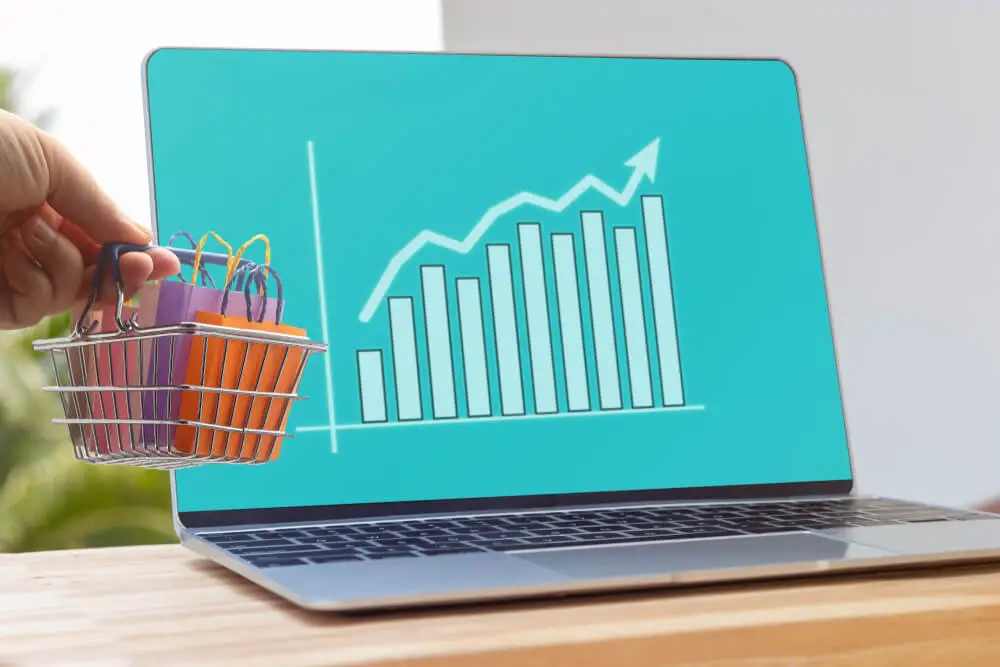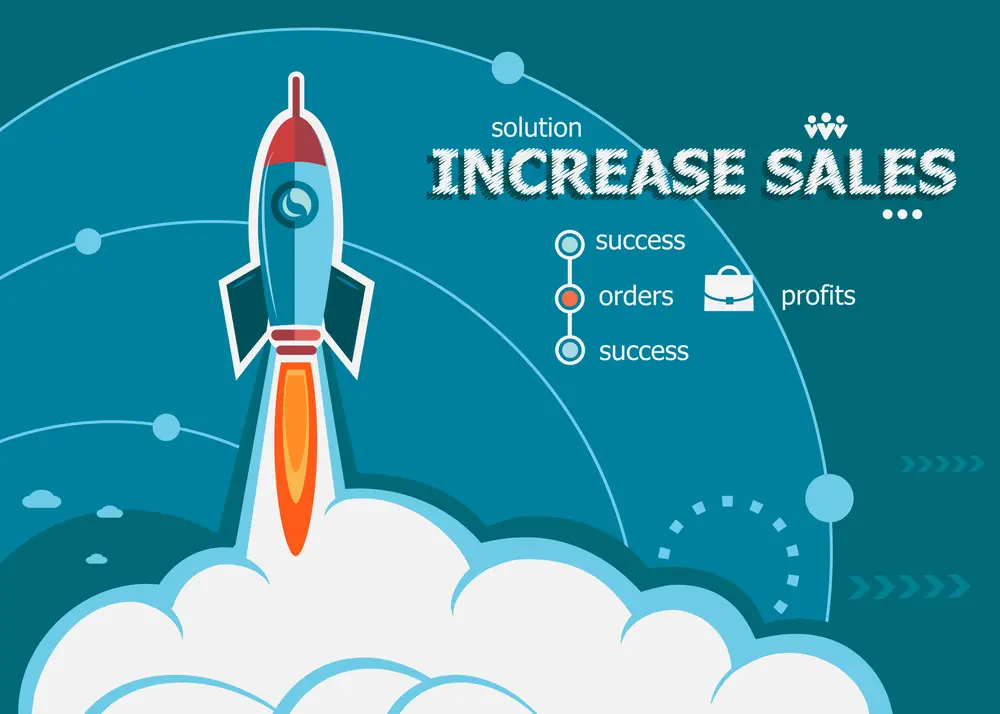Shopify store sale are key to growing your online business. With so much competition out there, it’s important to make your store shine. In this guide, we’ll walk you through some easy, practical tips to boost your store’s performance. You’ll learn how to make your product pages more appealing and how to smooth out your checkout process.
These steps are all about turning casual browsers into loyal customers. With these helpful strategies, you’ll not only see a rise in your sales but also strengthen your presence in the online market. Ready to start making more sales on your Shopify store? Let’s get going!
Understanding Conversion Rate Optimization: What Is CRO?
Conversion rate optimization (CRO) is about tweaking your website or app to help boost the number of visitors who do what you hope they will—like making a purchase, especially when it comes to Shopify store sale. Think of it as making the most of the visitors you already have. By improving your conversion rate, your efforts go further, giving you more value for the same amount of traffic.
Shopify stores often focus on CRO to turn casual browsers into buyers. This involves trying out different parts of your online store, such as changing headlines, swapping images, or moving buttons around, to find out what leads to the best results.
When you learn CRO, it’s a bit like experimenting in the kitchen to find the perfect recipe. You mix different ingredients—or in this case, elements of your website—to see which combination works best.
The ultimate aim is to smooth out any bumps in the road that might be stopping potential customers from completing their purchases. By removing these barriers, you make it easier for people to buy from you, which is what good CRO is all about.
What Is The Average Shopify Conversion Rate?
This is the big question every Shopify store owner wants to crack.
You probably already know that the conversion rate is the percentage of visitors who end up buying something from your Shopify store. But what counts as a “good” conversion rate? Generally, the average conversion rate for check Shopify store sales is about 1.3%. But this number can change a lot depending on things like what you sell, who you sell to, and your industry.
Recent stats show that the best online Shopify stores can have conversion rates between 3-5% or even more.
But if your numbers aren’t there yet, don’t worry! Every ecommerce store is unique, and there’s always room to get better.
Focus on really getting to know your customers, making your online store the best it can be, and trying out different tactics to lift your store’s conversion rate.
Remember, it’s not just about hitting a certain number. It’s about constantly getting better and always trying to outdo your past performance.
How To Calculate The Conversion Rate For Your Website Or Store?
Calculating your conversion rate is much simpler than you might think.
Here’s how you can do it step-by-step:
Firstly, find out how many visitors your Shopify store gets over a certain period, like a week or a month. This figure is your total number of visitors. This step is important as it sets the foundation to boost your website conversion rate.
Next, figure out how many of those visitors bought something from you during the same timeframe. Your total conversions are shown by this number.
Now, to find your conversion rate, divide the total conversions by the total number of visitors.
Then, multiply the result by 100 to turn it into a percentage. For instance, if your store had 1,000 visitors and 20 of them made a purchase, your Shopify conversion rate would be 2%.
You can make this process easier by using online tools or the analytics tools that come with Shopify. They help you track these numbers automatically.
Remember, conversion rates change, so it’s important to keep an eye on them regularly and watch for any trends over time. This will help you understand how well your store is doing and where you can improve.
A Guide to Optimizing Your Conversion Rate
If you’re starting to focus on improving your Shopify conversion rate, there are three main parts of your site to concentrate on:
Home page: Think of your homepage as the front door to your online store. It’s the first thing people see, so you want it to be welcoming and easy to use. To boost your Shopify store sale, use clear images, short headlines, and direct calls to action that encourage visitors to buy.
Category pages: These pages help shoppers find exactly what they’re looking for quickly. For better Shopify stores, it’s important to keep these pages tidy and straightforward. The easier it is for customers to navigate and find products, the smoother their shopping experience will be.
Product pages: This is where customers decide to make a purchase. Enhance your product pages by adding detailed descriptions, high-quality images, and strong calls to action. Show off the main features and benefits of your products to help shoppers see the value and make that important buying decision.
By improving these three critical areas—home page, category pages, and product pages—you’ll set your Shopify store up for better conversion rates.
Top 10 CRO Tips To Increase Your Shopify Store Sale
Here are our top 10 proven tips for conversion rate optimization (CRO) that are guaranteed to help increase your sales on Shopify. Let’s dive into these effective strategies to enhance your online store’s performance.
① Offer Discount Popups to Encourage Purchases
Offering a discount to first-time visitors in exchange for their email is a common trick many online stores use to attract customers. For instance, Bubble Skincare uses this approach effectively.
However, since it’s widely used, customers are becoming less responsive to basic discount pop-ups. To stand out and improve your pop-up strategy, here’s what you can do to learn CRO more effectively:
Start with a multi-step pop-up that asks a simple Yes or No question. This can engage people more than a straightforward offer.
Plan to show your pop-up when someone is about to leave your site—this is known as exit intent. It’s a last chance to catch their interest.
Make sure your pop-up looks great on mobile devices. More people shop on their phones now, so your offers must look good on smaller screens.
Add elements that build trust, like customer reviews or trust badges, to your pop-up. This can reassure visitors that your store is reliable.
Delay the appearance of the close button by a few seconds to give visitors more time to read your offer.
Use a unique discount code for each visitor instead of one general code. This can make your offer feel more exclusive.
Finally, show them related products on the thank you page when someone uses your discount. This might encourage additional purchases and is a smart way to check Shopify store sale performance.
② Bring Returning Visitors to Their Last Stop
Do you notice a lot of people coming back to your Shopify store without buying anything?
This is pretty common, especially when they’re considering pricier items. Shoppers often like to look around, compare different products, and think it over before they decide to buy. But just because they leave doesn’t mean they won’t come back to purchase from your online Shopify store.
When they return, greet them with a friendly popup that shows them the products they looked at last time. This makes it easy for them to pick up where they left off, all with just one click.
This simple welcome-back message can help boost your website conversion rate by turning those return visits into sales much faster.
③ Expand Your Email List While Segmenting Visitors
Collecting email addresses from potential customers is crucial for your marketing efforts.
However, simply sending out the same old newsletters isn’t enough to make an impact in 2024. You need to personalize your approach to grab attention.
How do you do this? Start by introducing segmented pop-ups on your website. These pop-ups should include a set of questions that help you categorize people into different groups based on their preferences.
Once you have these questions answered through your email pop-up, you can organize your email list into these segments. This allows you to tailor your emails specifically to each group, making your messages much more relevant and engaging. This targeted approach is a great way to improve your Shopify conversion rate, as it resonates more with each recipient, encouraging them to take action.
④ Suggest Related Products in Your Blog Posts
If your blog posts aren’t boosting your sales, consider adding some product suggestions.
By placing recommendations for products within your blog posts, you can point visitors to items they might find interesting. This strategy can keep your readers engaged and might lead to more sales. It’s a smart way to enhance your Shopify store sale efforts, making your blog not just informative but also a tool for increasing conversions.
⑤ Send Reminders About Active Coupons
When you give new customers coupon codes to boost sales, you want them to use them, right? A smart strategy is to set up a sticky bar on your site.
This sticky bar stays visible either at the top or bottom of the screen, constantly reminding users that they have a discount waiting for them. It’s like a friendly little reminder, saying, “Hey, remember to use your discount!”
Seeing this reminder makes people more likely to use their coupons. And when they use their coupons, they’re more likely to make purchases. This is a great way to increase conversions in Shopify stores.
Learning to use tools like this is part of Learn CRO — it’s all about making small changes that encourage people to buy more from your store.
⑥ Introduce a Free Shipping Offer Based on Cart Value
Have you ever added something extra to your cart just to get free shipping? You’re not alone. Almost everyone agrees that free shipping is the biggest motivator to shop more online.
Offering free shipping can be a powerful way to get more sales.
You can use sticky bars on your site to let shoppers know when they’ve added enough to their cart to qualify for free shipping. By adjusting these notifications based on how much is in their cart, you not only encourage them to complete their purchase but also to potentially buy more. This approach is a smart way to check Shopify store sale and boost them effectively.
This tactic is especially useful for online Shopify stores looking to improve their conversion rates and motivate customers to make larger purchases. By making shoppers aware of how close they are to getting free shipping, you’re giving them an extra push to add more items to their cart.
⑦ Highlight Key Products with Exit-Intent Technology
Are you noticing lots of people looking at your products but not buying? Here’s a tip: show them some exciting items just as they’re thinking about leaving.
Why does this help boost sales?
First off, think beyond discounts. Not everyone is looking for a cheaper price. A well-timed pop-up can grab their interest with offers that feel more personal than just cutting costs. This can boost your website conversion rate by keeping them engaged.
Also, try to inspire, not just push. Instead of urging them to buy quickly, show them how your products can improve their lives. Use headlines that connect with their needs and dreams. This makes customers happier and more satisfied, which helps increase your Shopify conversion rate.
Finally, offer them products that suit their tastes. Use their browsing history and preferences to make suggestions. This makes your offers feel more tailored and appealing, which can encourage them to make a purchase.
⑧ Enhance Product Pages with AI-Optimized Content
Feeling swamped with too many product pages and not enough time to fine-tune them?
Don’t worry. AI can help lighten your load. OptiMonk’s Smart Product Page Optimizer acts like a virtual assistant for your website, making it easier to start your Shopify journey.
With this tool, you can quickly upgrade your product pages. It uses AI to create personalized, benefit-focused text for your pages. For example, take a look at what Mounteen achieved using this optimizer:
- They added a bold, eye-catching slogan at the top of each product page to grab visitors’ attention.
- Below the slogan, they included a clear, benefit-driven subheadline to highlight what makes the product special.
- They listed the main benefits of the product in a bulleted list right where visitors first look, making it easy for them to see how the product could make their lives better.
And the best part? They did all this for hundreds of product pages with just a few clicks, boosting their revenue by 18%.
⑨ Optimize Your Homepage with AI-Driven A/B Testing
Refining your homepage’s message is a powerful way to boost conversions in your Shopify store.
Need proof? Bukvybag saw a 45% increase in orders by running A/B tests on their homepage to refine their unique selling proposition. This kind of testing can amplify your Shopify store sale.
To simplify A/B testing, you can use fully automated, AI-assisted tools. OptiMonk’s Smart A/B Testing feature is a great example. Just choose the parts of your website you want to test, like headlines or descriptions, and the AI takes over. It crafts better options and then tests these new ideas automatically, comparing them to your original content.
This smart testing can make a significant difference in how well Shopify stores perform, helping you find the best ways to communicate with your visitors and turn them into customers.
⑩ Align Landing Page Headlines with Your Advertising Messages
Are you running different ads on Facebook or Instagram, each with its message and design, but sending everyone to the same landing page?
Here’s a simple way to boost your conversions: match your landing page to the ad. This means changing the text and offers on your landing page to fit the specific ad people clicked on.
When visitors see that the landing page matches the ad they clicked, they’re more likely to stay and buy something. This not only helps you learn CRO better but also makes your Facebook ads work harder for you.
By doing this, you can greatly improve your Shopify store’s conversion rates and make your advertising more effective. This approach will also help you better check Shopify store sale and track their success.



